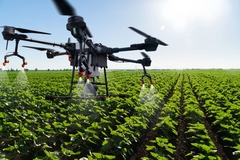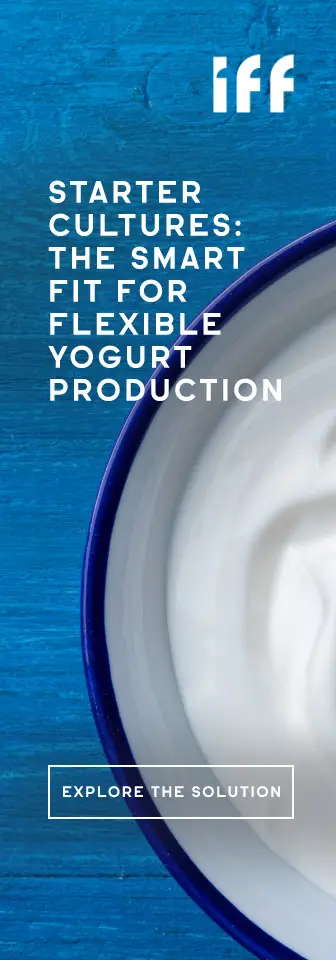Steakholder Foods heralds “new era” in food tech with ready blends for 3D-printed meat and fish
04 Apr 2024 --- Steakholder Foods has rolled out two 3D-printed meat blends, SHMeat and SHFish, in the US for formulating plant-based fish and steak alternatives after receiving the Generally Recognized as Safe (GRAS) status for all the ingredients used. The blends are crafted to mimic the taste and texture of traditional meat and fish and are marketed as a “guilt-free and environmentally friendly” meat substitute for consumers.
The move marks the Israeli biotech firm’s first step toward overseas expansion, eyeing collaboration with established players in the plant-based meat and alt-fish sector along with traditional meat and fish producers looking to diversify and expand their product portfolios.
“As we introduce our SHMeat and SHFish blends to the US market, we stand at the cusp of a new era in food technology,” says Arik Kaufman, CEO of Steakholder Foods.

“Our advanced 3D printing technologies are not just a testament to innovation but also a commitment to sustainability and health.”
Kaufman believes the company’s foray into the US market is a “significant step" toward a future with food that contributes to a healthier society and a more sustainable world.
Expanding the alt-meat horizon
In line with the consumer demand for diversity in meat analogs, Steakholder Foods is also working on a range of “exciting” blends besides the beef and white fish blends, such as SHMeat Beef Asado, SHMeat Beef Tenderloin, SHMeat Beef Flank, SHMeat Chicken Fillet and SHFish Salmon.
 The company is looking to collaborate with key meat and alt-meat players in the US.The company notes that each blend is carefully developed to ensure quality and flavor, catering to various culinary preferences.
The company is looking to collaborate with key meat and alt-meat players in the US.The company notes that each blend is carefully developed to ensure quality and flavor, catering to various culinary preferences.
Earlier this year, the bioprinting expert unveiled the “world’s first” plant-based, 3D-printed eel, highlighting its ability to accurately replicate the complex texture of eel through precision layering and a unique combination of materials in its proprietary 3D-printing technology.
The company is also targeting food security challenges with its bio-inks made from plant-based ingredients for 3D-printing applications, Kaufman told Food Ingredients First last year.
Tech for texture
In a bid to replicate the conventional meat and fish’s texture, the company’s production machines tap into two types of 3D technologies — Drop Location in Space (DLS) and Fused Paste Layering (FPL).
DLS focuses on fish and seafood production to create “delicate textures” that closely resemble those found in authentic seafood, while FPL is used during meat production to capture the “fibrous texture” of meat in plant-based products.
“These technologies enable us to produce a variety of textures and flavors, from the delicate fibrousness of a white fish filet to the robustness of a beef steak, ensuring that every bite is as satisfying as it is responsible,” notes the company.
The 3D-printing machines can work in traditional food factories, matching the same scale of production in the industry.
Analyzing safety
As per the Food Standards Agency in the UK, since 3D-printing works with a variety of food ingredients, understanding food safety issues should be a focus of manufacturers. These include cleaning of food residues and microbial contamination of stored products.
 Steakholder says its machines are designed according to food safety standards.Another concern is the perception of 3D-printed foods as ultra-processed foods with potential health risks, which the WHO has recently flagged.
Steakholder says its machines are designed according to food safety standards.Another concern is the perception of 3D-printed foods as ultra-processed foods with potential health risks, which the WHO has recently flagged.
Moreover, with no national, provincial or international mandatory standards specifically for 3D-printed foods, scientists are concerned about the confusion and “inconsistent standards” for the novel foods.
To ensure the safety of its blended dried extracts, Steakholder Foods says it is working to ensure that the production process meets the requirements of the Food Safety Modernization Act set by the FDA and Good Manufacturing Practices (cGMPs) and other required regulations recommended by its ingredient consultant.
Additionally, the machines are designed according to food safety standards set by the European Hygienic Engineering & Design Group.
3D-printing start-up landscape
As food technology advances, start-ups are widening their innovations through 3D-printing techniques to develop plant-based foods.
Revo Foods uses the 3D-printing technique to formulate vegan salmon filets, which it rolled out in German supermarkets last year. This was followed by the launch of its high-precision extrusion system for mass production and customization of 3D-printed meat alternatives.
Meat-free octopus is another innovation made using 3D-printing by the company by leveraging mycoprotein for its fibrous nature.
In Korea, CJ Foods works with T&R Biofab to develop alt-meat using 3D-bioprinting technology that targets the taste, texture, appearance and nutrition that consumers stipulate.
By Insha Naureen












